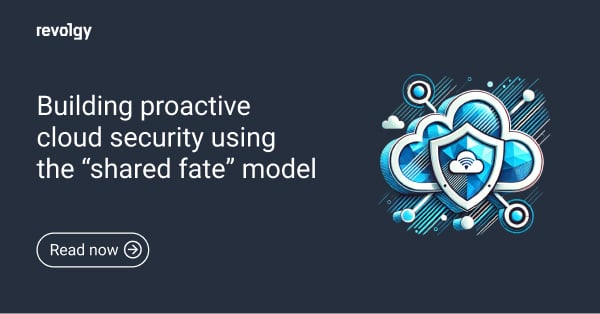GCP, Professional Services
AlloyDB vs. Cloud SQL comparison
Article updated on 6 December 2023 with the help of Emir Okan, Senior Product Manager, AlloyDB for PostgreSQL at Google.
What is AlloyDB?
AlloyDB, in Google’s words, is:
A fully managed PostgreSQL-compatible database service
With some highlight features:
More than 4X faster for transactional workloads than standard PostgreSQL
Fast, real-time insights, up to 100X faster analytical queries than standard PostgreSQL
Simplified management with machine learning-enabled autopilot systems
Key differences from Cloud SQL
Cloud SQL is the original hosted solution by Google
AlloyDB shares a lot of functionality with Cloud SQL, to the point that I personally would call it a drop-in replacement. Instead of focusing on all the shared things in this section, we’ll focus on all the differences.
Pricing
You pay for the disk utilization, not for the disk capacity. This means that if you delete data, you pay less. On Cloud SQL, you have to re-create the instance to decrease the disk capacity.
This is the change we are most excited about, as the mental weight of Cloud SQL’s “increase only” disks is now gone.
The entry price for AlloyDB
The smallest instance size of Cloud SQL is the db-f1-micro (1 shared vCPU, 0.6 GB RAM), for which you only pay about 10 EUR in the europe-west3 (Frankfurt) region per month, including the minimum disk size of 10 GBs.
The smallest cluster size of AlloyDB is 2 vCPUs with 16 GB of RAM, and it costs about 250 EUR in europe-west3 with only 1 GB of capacity used.
Both HA and non-HA instances are available.
Networking
AlloyDB does not provide a Public IP connection option — it’s private only! But Public IP is being released in mid-December this year.
Performance
The smallest possible instance size differs drastically between the two database options.
AlloyDB’s higher performance allows the same workload that runs on Cloud SQL to run on a smaller AlloyDB instance — which likely would save on cost as well.
Database systems
AlloyDB is only compatible with PostgreSQL, unlike Cloud SQL, which also supports MySQL/MariaDB and Microsoft SQL.
Backups
The point-in-time recovery of backups, called Continuous Backup & Recovery, became available in Q1 of 2023.
It is also not possible to get AlloyDB to create a dump file (and upload it to Cloud Storage), which is a feature of Cloud SQL that allows users to take backups off of the cloud platform for external backups. It is still possible to create the dump file manually through pg_dump.
Deployment & networking
Instance / cluster setup
With AlloyDB, you do not need to care about much as a project admin. You select only the following options:
- HA / multi-zone setup or a basic setup
- Location (region)
- Instance CPU & RAM
- VPC network
You can later add read replica instances into a Read pool.
Backups
Backup lifecycles are independent from the clusters, so you can still access/restore from backups even if you delete your cluster — which is not the case with Cloud SQL instances.
AlloyDB creates daily backups with the Continuous Backup & Recovery feature, which combines daily backups with WAL archiving for point-in-time recovery, with a 14-day recovery window. This is the same as the default backups that Cloud SQL provides; and backups can be disabled during or after cluster creation.
It is also possible to create on-demand backups, with a maximum retention of 365 days or until you delete them. They are stored as “AlloyDB backups” and can be restored directly from the console, but they are not accessible in file form (such as a pgdump). File backups have to be created manually.
VPC Peering
Just like Cloud SQL, AlloyDB is deployed in a separate, hidden Google-managed project. The networking goes over a VPC Peering setup through Private Services Access.
Therefore, it also suffers from the same disadvantages that Cloud SQL suffers from, such as the VPC Peering not being transitive (i.e. you cannot call AlloyDB through two VPC Peerings; there must be an extra networking node to relay the networking communication).
Auth Proxy
Another shared networking feature is the Auth proxy program, although it’s not the exact same one as Cloud SQL.
- Both Cloud SQL and AlloyDB proxy are distributed in the form of a standalone binary program.
- Both create a secure tunnel for the PSQL connection.
- AlloyDB Auth Proxy doesn’t circumvent the private network setup limitations — you need to either start this proxy from a proxy VM, or through a VPN.
Examples of the benefits of AlloyDB
Scalability
A large e-commerce company is expecting a big spike in traffic during the holiday season. Because AlloyDB is built on a distributed architecture, it can easily handle the increased number of concurrent users and high levels of data. This means that the company’s website can continue to operate smoothly and handle the increased traffic, even during peak periods.
As a side note, Read pools are especially useful for this feature, allowing you to add ~2000 vCPUs of computing power behind a single IP address.
Flexibility
A social media company wants to store and analyze both structured and unstructured data from users’ posts. AlloyDB’s ability to work with various data types makes it well-suited for this task. The company can use AlloyDB to store the structured data (e.g. user information) in a traditional table format and the unstructured data (e.g. posts and comments) in a document format.
Another side note: Postgres is not super friendly with unstructured data but could be alright, e.g. if the data is a JSON document. See PG-supported data types here: https://www.postgresql.org/docs/current/datatype.html
Security
A healthcare company wants to store sensitive patient information in a database. AlloyDB’s built-in encryption and authentication features ensure that the patient’s data is protected and only accessible by authorized users. This helps the company to comply with regulations and protect patients’ privacy.
If you are interested in learning more about the advantages of AlloyDB and how it can help your business, don’t hesitate to get in touch with us.
FAQs
Q1: What is AlloyDB?
AlloyDB is a fully managed, PostgreSQL-compatible database service offered by Google. It is designed for high performance, featuring simplified management through machine learning-enabled autopilot systems.
Q2: What are the main performance advantages of AlloyDB over standard PostgreSQL?
AlloyDB is more than four times faster for transactional workloads and up to 100 times faster for analytical queries compared to standard PostgreSQL.
Q3: How does AlloyDB's pricing model for storage differ from Cloud SQL's?
With AlloyDB, you pay for disk utilization, meaning you only pay for the storage you are actively using and costs can go down if you delete data. With Cloud SQL, you pay for provisioned disk capacity, and the disk size can only be increased, not decreased without re-creating the instance.
Q4: What is the difference in the minimum size and cost between AlloyDB and Cloud SQL?
The entry point for AlloyDB is significantly higher than for Cloud SQL. The smallest AlloyDB cluster has 2 vCPUs and 16 GB of RAM, costing around 250 EUR per month in the europe-west3 region. In contrast, the smallest Cloud SQL instance is a db-f1-micro which costs about 10 EUR per month.
Q5: What database engines does AlloyDB support?
AlloyDB is compatible only with PostgreSQL. It does not support MySQL, MariaDB, or Microsoft SQL, which are available on Cloud SQL.
Q6: Can I use a public IP to connect to an AlloyDB instance?
At the time the article was updated (December 2023), AlloyDB only offered private IP connections. A public IP option was planned for release in mid-December of that year.
Q7: How are backups managed in AlloyDB?
AlloyDB provides a "Continuous Backup & Recovery" feature that creates daily backups and allows for point-in-time recovery within a 14-day window. You can also create on-demand backups with retention up to 365 days. Unlike Cloud SQL, AlloyDB backup lifecycles are independent of the cluster, so backups remain accessible even after a cluster is deleted.
Q8: Is it possible to export a backup to a file, like a pg_dump?
AlloyDB does not have a built-in feature to create and export a dump file to Cloud Storage, which is a feature of Cloud SQL. To get a dump file, you must create it manually using the pg_dump command.
Q9: How does AlloyDB's networking setup work?
Similar to Cloud SQL, AlloyDB is deployed in a hidden, Google-managed project and connects to your network via VPC Peering through Private Services Access. This means it also has the same limitation where VPC Peering is not transitive.
Q10: Is the AlloyDB Auth Proxy the same as the one for Cloud SQL?
While AlloyDB has an Auth Proxy program that creates a secure tunnel like the Cloud SQL version, it is not the exact same program. It also does not bypass the private network limitations, meaning you must run it from a machine within the private network, such as a proxy VM or through a VPN connection.



